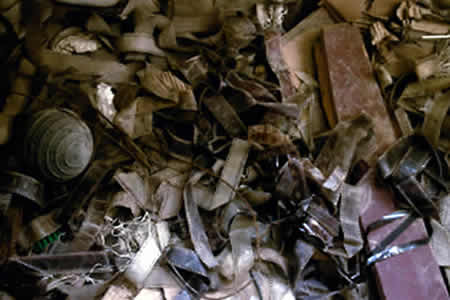The need to digitize your 8mm, 16mm and Super 8mm film is rooted in the fact that film decays over time. Understanding a bit about why film decays may add some perspective to this. It may also spur you along the path to getting it done sooner rather than later.
All film, regardless of its size, has the same basic two layer structure, or layers. There’s a thicker layer that’s transparent, and is a form of plastic. The thinner layer on top is the emulsion and that’s what carries the photosensitive material in something called a “binder” in a gelatin substance. The composition of the emulsion layers differ, based on whether it’s color, or black and white film. Color film emulsion is made up of three layers of dyes: yellow, cyan and magenta. Black and white emulsion contains silver salts that are converted into metallic silver particles during processing.
And both the base and emulsion layers are subject to decay and damage from storage, handling, the storage environment and – time.
Without going into the earliest of film manufacturing histories, most of the film that we see from folks like you, have either an Acetate or a Polyester base.
You may have seen the printing “Safety Film” on some film. This is the result of manufacturers having replaced cellulose nitrate as the main base (which is flammable) with, over time, cellulose triacetate. Which is why all known American 8mm and 16mm film uses some form of “Safety Film”.
By the mid 1950s, Kodak started to sell a new type of safety film made of polyester, which is the toughest and most chemically stable film used today. And because it’s so strong, it can also be made thinner, and still be a little less vulnerable to damage by mishandling. The downside is that it requires special splicing techniques, like splicing tape or an ultrasonic splicer. The big upside is that it outlasts other types of film.
The reasons to have your 8mm, 16mm or Super 8mm film transferred to digital, to preserve your memories, are that with each month, year, and with each handling, the life of the film is reduced.
Here Are a Few Reasons your Film Decays
1) These films require mechanical interaction with a machine to view them. A projector. They also require manual handling. So if the film is un-spooled on a worktable, or is passed through worn rollers, it can pick up dirt, dust, and be exposed to scratches and abrasions. If it’s incorrectly threaded, it can be stretched, ripped or torn.
2) Then there’s environmental damage in the form of mold, mildew and fungus. Film that’s stored in humid conditions is an ideal host for mold. These fungi attack the film from the outside edge and work their way into the whole film roll. These molds and fungi can cause great damage to the emulsion.
3) In high humidity conditions, acetate film can shrink, lose flexibility, curl and even warp. At early stages, the film can be rescued by transferring it to digital formats. It is, of course, best to digitize well before this happens.
4) If your film has a magnetic soundtrack, it’s particularly vulnerable to “vinegar syndrome” (when the film begins to smell like vinegar).
Improving film storage is a good basic defense against decay. Transferring your 8mm, 16mm or Super 8mm film to a digital format such as DVD, Bluray or mp4 is the best long term solution. Perhaps the only one.


